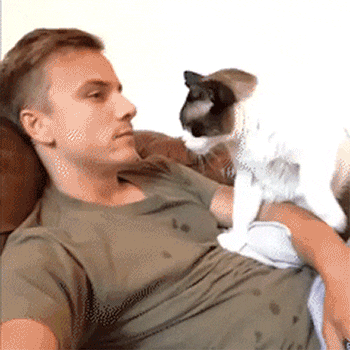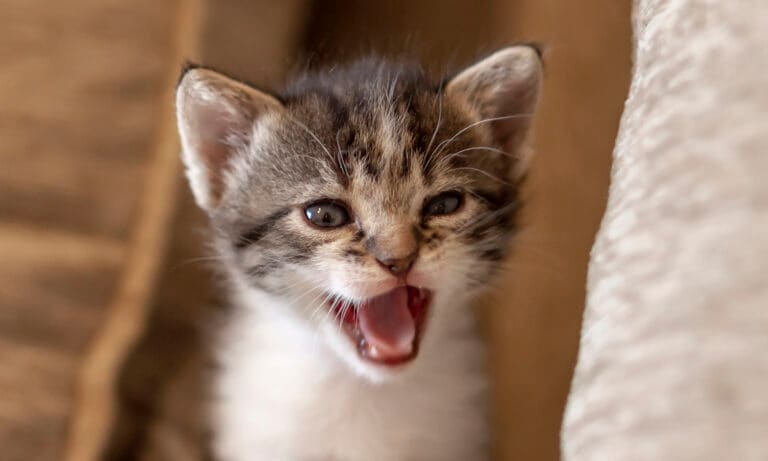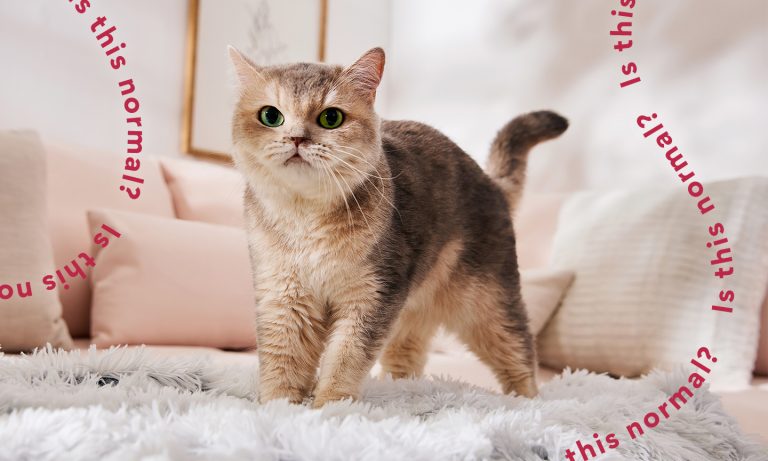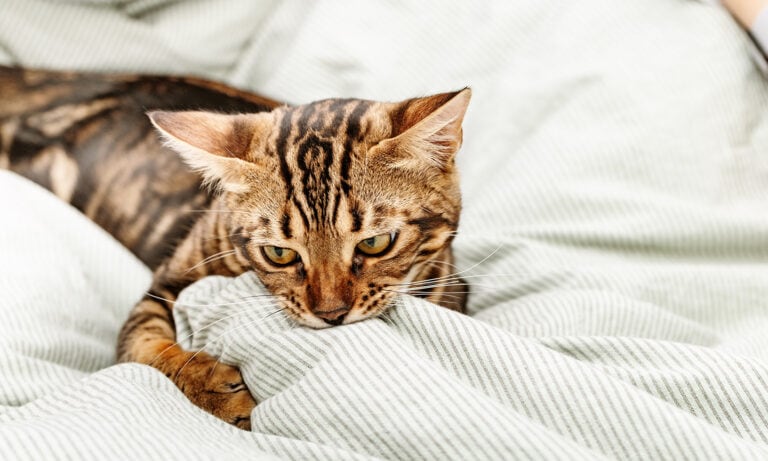Cats are very unique creatures. Their odd body language and strange habits are part of why we love them so much. But what do those weird cat behaviors actually mean?
Since domestication has been a relatively recent development for cats, some things cats once did to survive may have no adaptive value now that they are adored members of the modern-day household. But there is or was a pay-off for them somewhere along the line, or else they wouldn’t bother to do them. The key is to figure out what motivates the traits we find odd in our cats.
Here is a list of 15 weird cat behaviors and what they actually mean.
1Face Rubbing
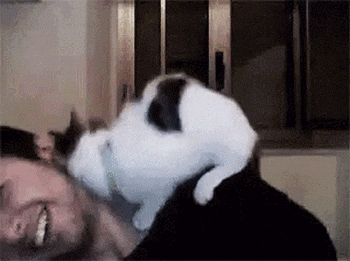
What does it mean when your cat approaches you and rubs their face from nose to ear on your leg, arm or face? It means they like you and are happy to see you!
Cats have scent glands in their faces. When they rub against you, it is an act of greeting and co-mingling scents with you. If you think about it, it is a bit like the European greeting of kissing three times, alternating cheeks each time.
2Head Butting Or Bunting
3Sudden Nip/Bite
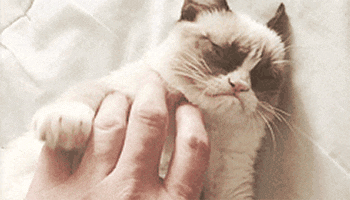
Many cats enjoy petting until the stimulation is too much for them—especially when it’s around the base of the tail. Their attitude can change quite quickly and, once they pass that point, they move to cut off the interaction with a swat or a bite.
Others are still enjoying the interaction, but the arousal leads to “play nipping” or “love bites”–gentle (and sometimes not so gentle) biting of nearby hands and fingers. This is likely a response to the excitement that comes with hunting or playing–or maybe mating.
4Tail Twitching

5Kneading
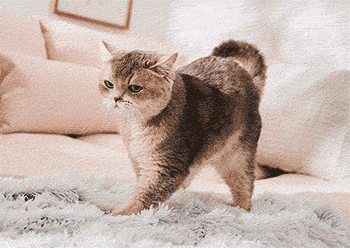
Kneading or “making bread” is an adorably weird behavior that’s leftover from the cat’s days of nursing on mom. Using their paws to manipulate the mammary glands stimulates the production of milk. It may also be a calming or enjoyable repetitive behavior that makes your cat feel relaxed or sleepy.
And remember how face rubbing involves scent-marking you? It’s likely that kneading does, too, since a cat has scent glands in their paws as well. Many cats show at least some kneading behavior throughout their lives, but some take it to a real art form–pawing, purring, and drooling combined.
Learn more about cat kneading.
.
6Purring
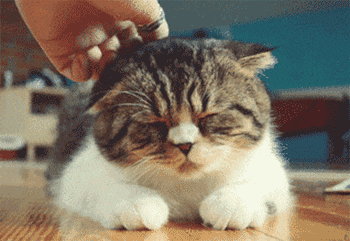
This is a pretty well known cat behavior, and many cat owners would not categorize it as weird behavior. But it is a very unique vocalization. It happens when the cat’s larynx vibrates between 25 and 150 times per second.
Most of us think of cats purring when they are happy or content. But cats also purr at times of fear, stress and pain. It’s possible the act of purring when less than happy is a bit like humans whistling in the dark—they may be attempting to self-soothe with an act that is usually associated with a happier time.
7Staring With Their Mouths Open
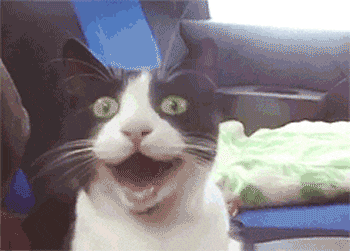
Have you ever seen your cat gaping with their mouth partly open, looking a bit like they has smelled something bad? It might also be described as grimacing or appearing to pant. This is called a “Flehmen response,” sometimes shortened to “flehming.”
The term comes from a German word referring to curling of the lips. The cat opens their mouth to allow scent to reach the vomeronasal organ (called the Jacobsen Organ) in the roof of their mouth. That organ provides more information about certain scents than smelling them through the nasal passages alone. The resulting facial expression could also have you thinking your cat is chuckling about something! And who can say that isn’t true?
8Sitting In Boxes

Want to know how to “catch a cat”? Just put out a small box on the floor. Cats of all types are drawn to small spaces; even lions and cheetahs appear to enjoy squeezing themselves into such cardboard safe places.
Being in a box helps the cat feel more protected than being out in the open, especially when the next urge to nap comes along. Another reason for tucking oneself into a box is that it catches and reflects body heat, which cats love.
9Transforming Into A Cat Loaf
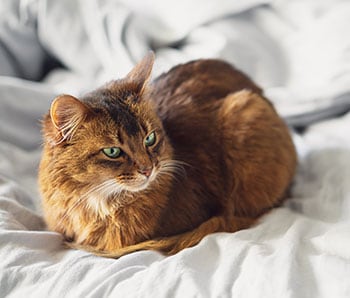
We all like to tuck our hands and feet under the covers when we are cold. Cats are not much different, they just tuck paws and tail—and sometimes noses—under “cover” of their own bodies.
A cat’s normal body temperature is somewhere from 100 and 102.5 degrees Fahrenheit, so the average wintertime household may not be comfortably warm to our kitties. Luckily, thanks to their lithe and flexible bodies, they can tuck all their extremities under them, leaving them looking a bit like a loaf of bread.
10Hanging Out in the Sink or Bathtub
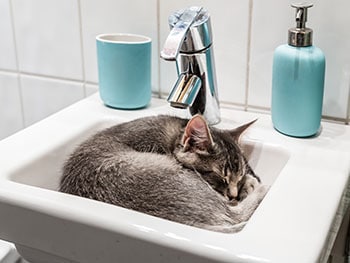
On hot days, your cat may seek out a cool place to relax. And the bathroom sink or tub may be just the ticket.
Of course, cats can also learn that water comes from the faucet, and they like to drink running water from the faucet. So that may be another reason why they seek out those two places.
11Trying To Bury Their Food
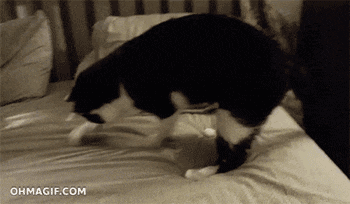
Trying to bury their food is an instinctual—albeit ineffective—behavior, at least for our domestic feline friends. In a less-tame environment than your home, a cat might want to cover the carcass of a dead animal it had killed to avoid attracting other predators to their own territory.
But, in the average kitchen, there isn’t much organic material like soil or leaves to cover the “dead body.” So, the cat ends up looking like they’re sweeping around the cat food bowl.
12Pretending Their Food Bowls Are Empty
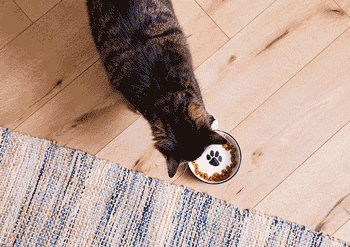
Speaking of food, some cats may appear to stick their nose up at leftover food in their bowl. It’s almost as if they pretend their food bowl is empty so they can get more food. But that’s not actually the case.
It’s more likely that they are experiencing “whisker fatigue,” or the overstimulation of their whiskers’ sensory system because they are rubbing on the side of the bowl. It could also be because they have actually trained you to give them more food when they act like nothing’s there.
13Howling At Night
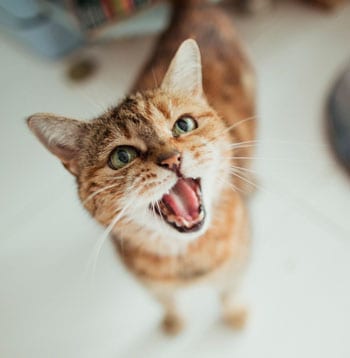
So two things are work when it comes to cats yowling at night. First, cats are naturally more active at dawn and dusk, which is when they normally hunt. (And they’re probably up at least sometime during the middle of the night, thanks to all that sleeping during the day.) Second, they need to eat several small meals a day. Combine their nighttime prowling behavior with being hungry and you got yourself one yowling cat.
Get yourself more rest by giving your kitties food puzzle toys or just hiding some cat treats or kibble around the home for your little hunters to find.
Note: If you notice sudden changes in nighttime vocalizations in a senior cat, it might be a reflection of cognitive changes going on. Best to check with your vet.
14Late Night Zoomies
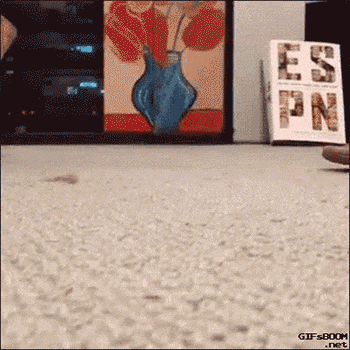
Zoomies are bursts of pent-up energy. While they can happen at any time of day, they may be more prevalent (or more noticeable if you’ve got a 9-5) when you’re getting ready to go to sleep or perhaps while you’re actually asleep.
It’s normal for your cat to want to play at night since, again, they naturally have a different wake pattern. They also may recognize daytime hours as idle “quiet” time, when human family members aren’t home. In the evenings, however, the entire brood may be home, energizing your well-rested cat.
15Chirping
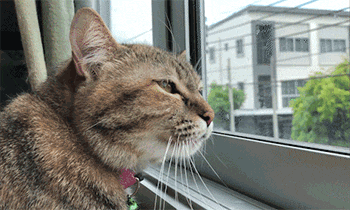
Read More
Share:

